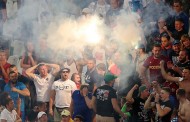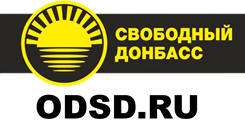The word ‘sniper’ and the verb ‘to snipe’ originated among the troopers in the 1770s in British India where it was an extremely difficult task to hunt the migratory Snipe bird (Gallinago gallinago) due to its camouflage feather patterns and erratic flight patterns. The phrase ‘Going on a snipe hunt’ is used by experienced people to make fun of novices by giving them virtually an impossible task. Female snipers of the 3rd Shock Army, 1st Belorussian Front. In addition to sharpshooting, military snipers are also trained in infiltration, field craft, camouflage, surveillance, reconnaissance and target locating. During the WWII, the Soviet snipers played a remarkable role on the Eastern Front. The Russian snipers generally used the standard Mosin-Nagant 1891 model rifles with optical PU Scope (Scope short cut), 7.62×54mmR rifle cartridges, armor piercing B-30 shells, tracer bullets and calibrated incendiary (P3). They used to carry 120 rifle cartridges as combat load. Unlike other countries, women were also recruited by Soviet Union as snipers and there were over 2,000 women snipers operating in 1943. Soviet Union was also the only country that trained snipers on purpose in the decade leading up to WWII
- 1st row – Guard Staff Sergeant, VN Stepanov: 20 kills. Guard Sgt JP Belousov: 80 kills. Guard Sgt AE Vinogradov: 83 kills.
- 2nd row – Guard Lieutenant EK Zhibovskaya: 24 kills. Guard Sgt KF Marinkin: 79 kills. Guard Sgt OS Marenkina: 70 kills.
- 3rd row – Guard Lieutenant NP Belobrova: 70 kills. Lieutenant N. Lobkovsky: 89 kills. Guard Lieutenant VI Artamonov: 89 kills. Guard Staff Sergeant MG Zubchenko: 83 kills.
- 4th row – Guard Sergeant, NP Obukhov: 64 kills. Guard Sergeant, AR Belyakov 24 kills
Total number of confirmed kills: 775. Photo taken in Germany, May 4, 1945.
Because of chronic problems in finding the manpower to fulfill military and industrial tasks, the Soviet Government recruited some 7.75 million women, of whom 800,000 served in the military. Sniping was a precision role, which many women soldiers performed with expertise. It is estimated that in 1943 there were more than 2000 female snipers in the Soviet armed forces. Female snipers have been credited with more than 12,000 confirmed kills.
The Soviet Union used women for sniping duties extensively, and to great effect, including Nina Alexeyevna Lobkovskaya and Ukrainian Lyudmila Pavlichenko (who killed over 300 enemy soldiers). The Soviets found that sniper duties fit women well, since good snipers are patient, careful, deliberate, can avoid hand-to-hand combat, and need higher levels of aerobic conditioning than other troops. Women were regarded as having the skills and nerves required for accurate marksmanship. Notwithstanding male skepticism, Major General Morozov, “the father of the sniper movement”, attributed superior female marksmanship to the fact that “a woman’s hand is more sensitive than is a man’s. Therefore when a woman is shooting, her index finger pulls the trigger more smoothly and purposefully”.
The most successful Soviet use of snipers during the second world war were during their defensive stages of the war (1941–1943), after which the advantage of defense shifted to the German side and German snipers became a real danger to the advancing Soviets. Soviet military doctrine used snipers for providing long-distance suppressive fire and for eliminating targets of opportunity, especially leaders, because during World War II, Soviet military leaders and combat theorists (Vassili Zaitsev contributed greatly to Soviet sniper doctrine, although he was officially neither of these) found that military organizations have difficulty replacing experienced non-commissioned officers and field officers during times of war. They also found that the more expensive and less rugged sniper rifles could match the cost-effectiveness of a cheaper assault rifle given good personnel selection, training, and adherence to doctrine.
Lady Death…….
In June 1941, 24-year-old Pavlichenko was in her fourth year of studying history at the Kyiv University when Germany began its invasion of the Soviet Union. Pavlichenko was among the first round of volunteers at the recruiting office, where she requested to join the infantry and subsequently she was assigned to the Red Army’s 25th Rifle Division; Pavlichenko had the option of becoming a nurse but refused; “I joined the army when women were not yet accepted”. There she became one of 2,000 female snipers in the Red Army, of whom about 500 survived the war. She made her first two kills as a sniper near Belyayevka, using a Tokarev SVT-40 semi-automatic rifle with 3.5X telescopic sight
Private Pavlichenko fought for about two and a half months near Odessa where she recorded 187 kills.When the Romanians gained control of Odessa her unit was sent to Sevastopol on the Crimean Peninsula, where she fought for more than eight months.In May 1942, Lieutenant Pavlichenko was cited by the Southern Army Council for killing 257 German soldiers. Her total of confirmed kills during World War II was 309,including 36 enemy snipers.
In June 1942, Pavlichenko was wounded by mortar fire. Because of her growing status she was withdrawn from combat less than a month after recovering from her wound.
Pavlichenko was sent to Canada and the United States for a publicity visit and became the first Soviet citizen to be received by a US President when Franklin Roosevelt welcomed her to the White House. Pavlichenko was later invited by Eleanor Roosevelt to tour America relating her experiences. While meeting with reporters in Washington, D.C. she was dumbfounded about the kind of questions put to her. “One reporter even criticized the length of the skirt of my uniform, saying that in America women wear shorter skirts and besides my uniform made me look fat”. Pavlichenko appeared before the International Student Assembly being held in Washington, D.C., and later attended CIO meetings and made appearances and speeches in New York City and Chicago. In Chicago, she stood before large crowds, chiding the men to support the second front. “Gentlemen,” she said, “I am 25 years old and I have killed 309 fascist occupants by now. Don’t you think, gentlemen, that you have been hiding behind my back for too long?” Her words settled on the crowd, then caused a surging roar of support. The United States gave her a Colt semi-automatic pistol. In Canada she was presented with a sighted Winchester rifle now on display at the Central Armed Forces Museum in Moscow. While visiting in Canada along with Vladimir Pchelintsev (fellow sniper) and Nikolai Krasavchenko (Moscow fuel commissioner) they were greeted by thousands of people at Toronto’s Union Station.
On Friday November 21, 1942, Lieutenant Pavlichenko visited Coventry, UK, and accepted donations of £4,516 from Coventry workers to pay for three X-ray units for the Red Army. She also visited Coventry Cathedral ruins, then the Alfred Herbert works and Standard Car Factory from where most funds had been raised. She had earlier in the day inspected a Birmingham factory.
Having attained the rank of major, Pavlichenko never returned to combat but became an instructor and trained Soviet snipers until the war’s end. In 1943, she was awarded the Gold Star of the Hero of the Soviet Union, and was commemorated on a Soviet postage stamp.
Later years and death
After the war, she finished her education at Kiev University and began a career as a historian. From 1945 to 1953, she was a research assistant of the Chief HQ of the Soviet Navy. She was later active in the Soviet Committee of the Veterans of War. Pavlichenko died on October 10, 1974 at age 58, and was buried in the Novodevichye Cemetery in Moscow.
A second Soviet commemorative stamp featuring Lyudmila Pavlichenko’s portrait was issued in 1976.
comments powered by HyperComments



